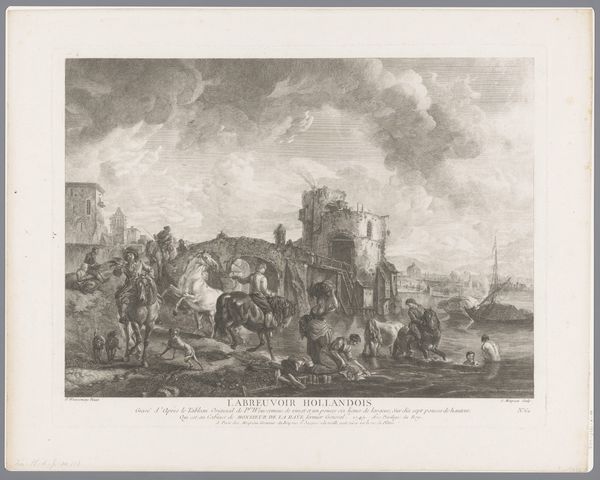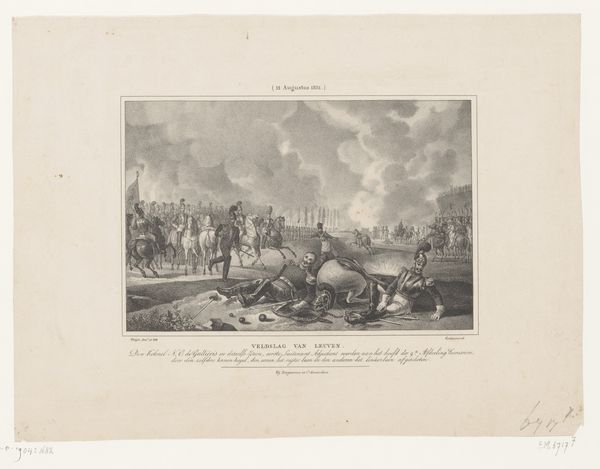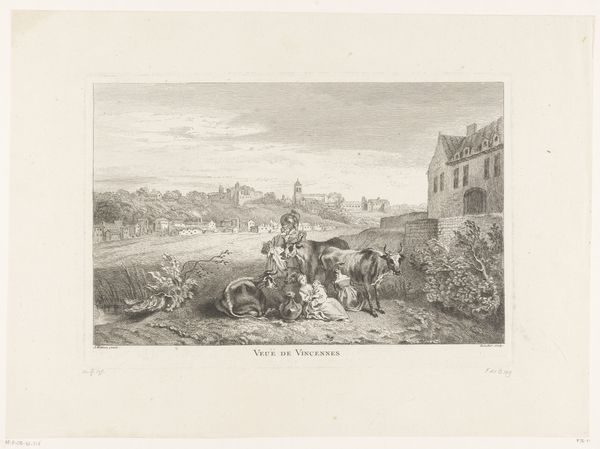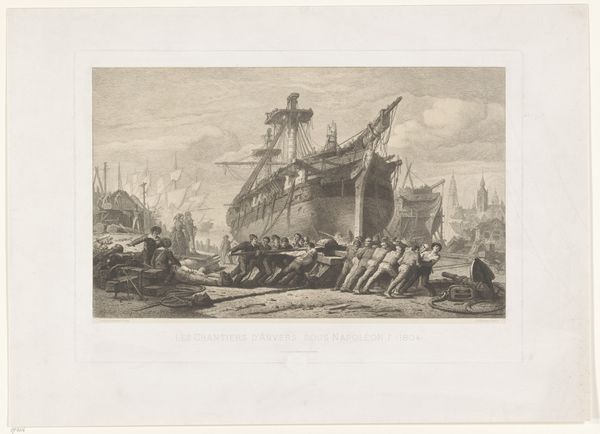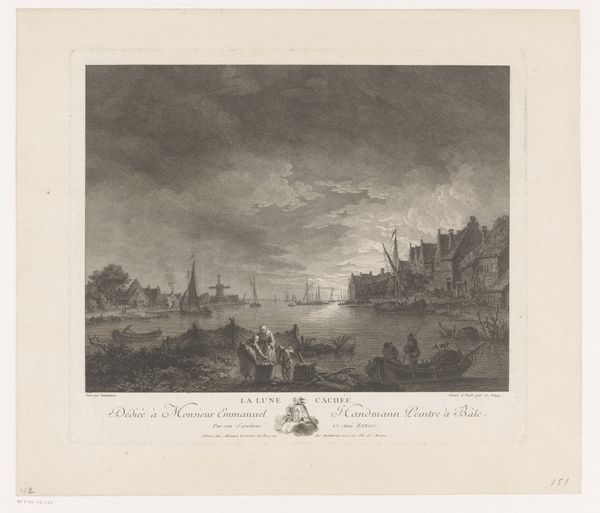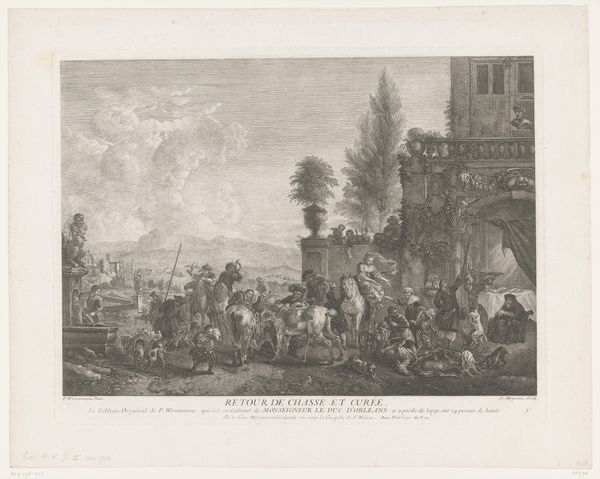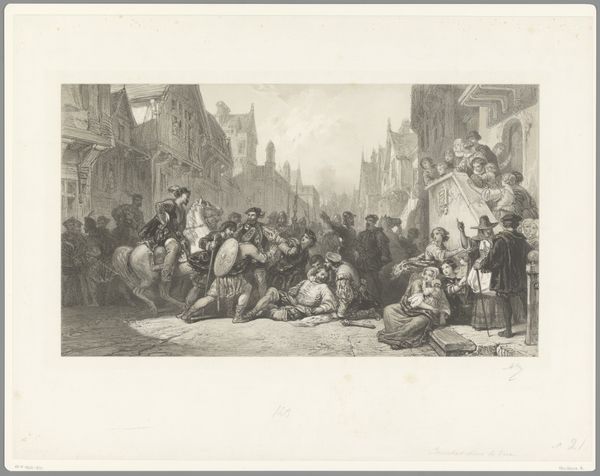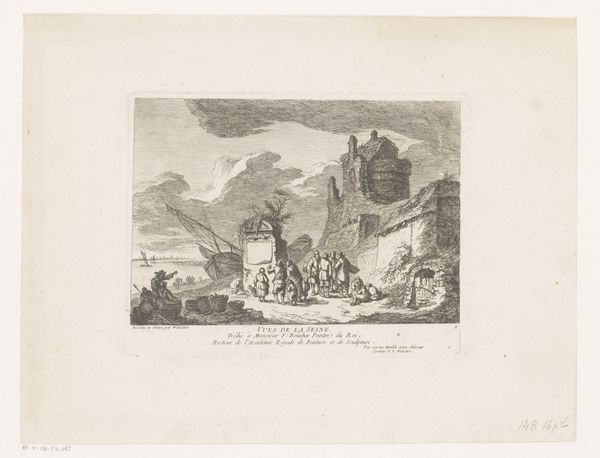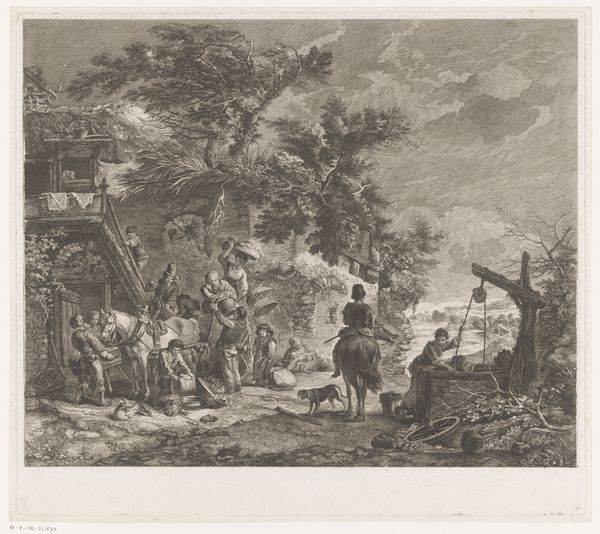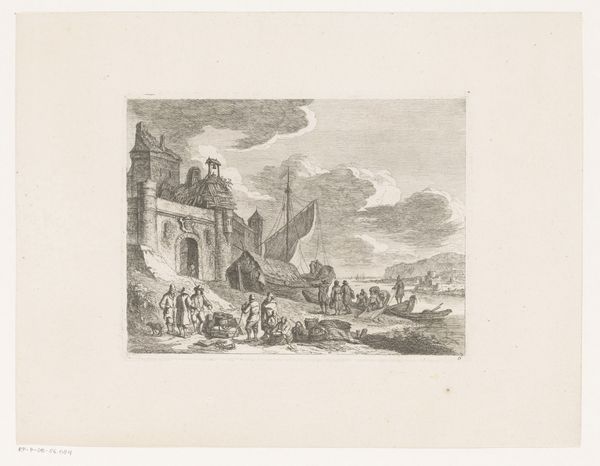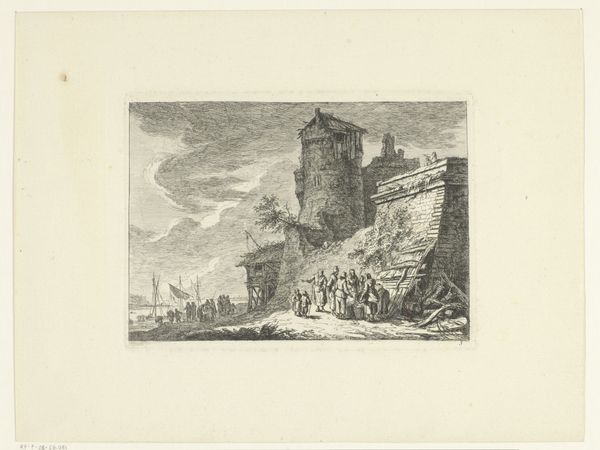
print, etching, paper, ink
#
16_19th-century
#
narrative-art
#
ink paper printed
# print
#
etching
#
landscape
#
paper
#
ink
#
watercolour illustration
#
genre-painting
#
history-painting
#
academic-art
#
watercolor
#
realism
Dimensions: height 210 mm, width 318 mm
Copyright: Rijks Museum: Open Domain
Léopold Flameng made this etching of the removal of plague victims in Marseille sometime in the 19th century. Etching is a printmaking technique that uses acid to cut into a metal plate, usually copper or zinc, to create a design. The plate is covered with a waxy, acid-resistant ground, and the artist scratches the design into the ground with a needle, exposing the metal. The plate is then immersed in acid, which bites into the exposed metal, creating incised lines. The remaining ground is removed, and the plate is inked and printed. Flameng was a master of this process, using it here to create a stark, detailed scene of human suffering. The fine lines of the etching allow for intricate details, from the folds of the victim's clothing to the expressions on their faces. The stark contrast between light and shadow emphasizes the grim reality of the plague, and also, perhaps, the grim reality of labor in a society where sanitation was inadequate and social support even less so. Considering the material and the making, we see how this work of art confronts larger questions about class and labor, reminding us that art is always made in a specific context, reflecting the skills, materials, and social realities of its time.
Comments
No comments
Be the first to comment and join the conversation on the ultimate creative platform.
